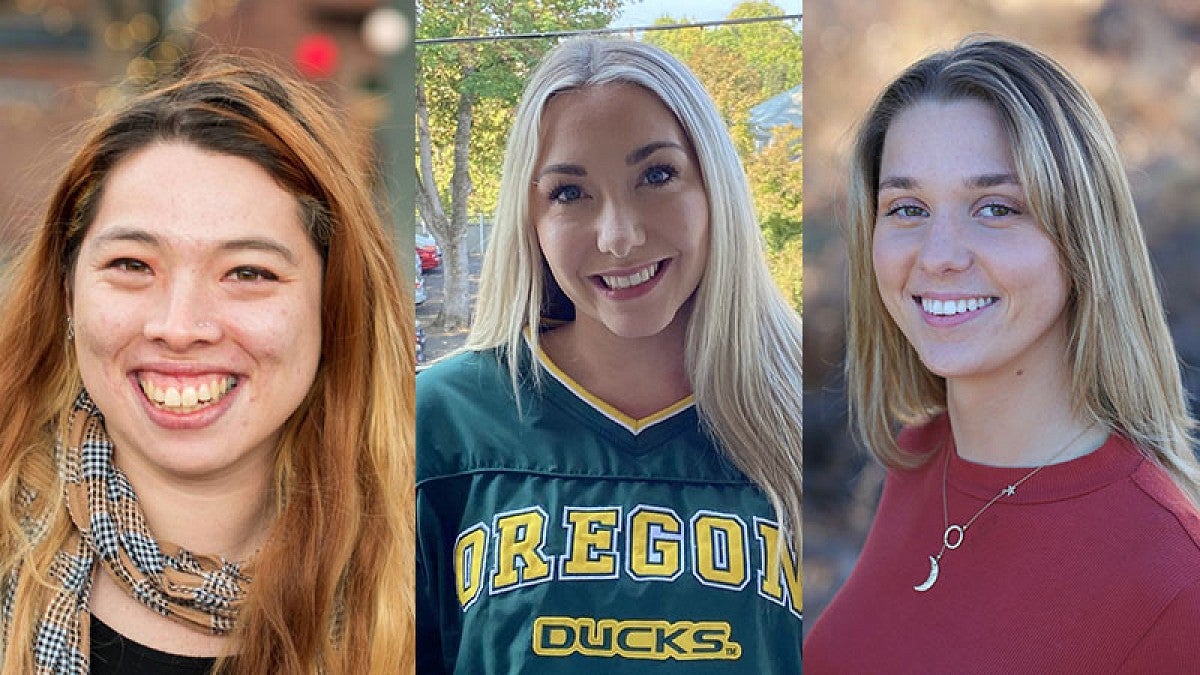Three UO geography students have formed a new group to develop networking opportunities and spur discussion with professionals in the field.
Claire Parton, Morgan Scafidi and Madison Fung are co-leaders of Oregon Women in Geographic Information Systems, which they formed in the current academic year.
Parton reached out last year to Scafidi, a fellow spatial data science and geography student, after some encouragement from an adviser. The two discussed their shared vision of forming the new organization to help women in their field find networking opportunities.
Parton and Scafidi then recruited Madison Fung, then a senior in the department who ran the UO Geography Club, and got to work.
“At the time, I didn’t really know anyone in my major,” Parton said. “So I thought it would at least be a great way to meet people.”
Now the three run Oregon Women in GIS, a non-UO affiliated organization that provides professional support and networking opportunities to women working in spatial data sciences throughout the Northwest.
They hold weekly meetings to discuss the job market, host professional GIS speakers, and bond over their shared experiences as women in a niche field. But it’s more than just a professional networking group, the women said. They also dedicate some of the time to discussing the intersections of their personal and professional lives, as well as their own struggles with mental health.
“It’s a safe space to come in and talk about what we do,” Scafidi said. “We bounce ideas off of each other and inspire each other to make our projects better.”
In the field of spatial data science, geographic information systems are computer systems that capture and display geographic data. The systems can map any kind of data set, Scafidi said, though the uniting factor is that it must be location-based.
For example, in one of their classes, Scafidi and Parton mapped the concentration of mammography clinics in Pennsylvania to breast cancer rates across all counties. That allowed them to identify which areas needed more cancer clinics.
“It’s uncovering patterns that you can’t see with the human eye,” Parton said. “We’re taking all these different factors and demographics and data points and putting them together to find a pattern on a map.”
Oregon Women in GIS is hosted by the Oregon chapter of the Urban and Regional Information Systems Association, an organization of GIS professionals in Oregon and Washington.
The parent organization hosts the group on its website and provides funding. While they haven’t used much of the money yet, Parton, Scafidi and Fung hope to put it toward having GIS professionals to come to campus and give technical workshops during future meetings.
“It’s a perfect mix of people in their 40s and 50s that have been in GIS for a while, people early in their careers, and students,” Parton said. “So, students can ask the professionals questions about career paths, and the professionals can mentor the students.”
Fung, who now works full-time as a GIS technician in Portland, has used the connections she’s made to advance her own career. Through her network, she was recently nominated to be the assistant director of the American Society for Photogrammetry and Remote Sensing, a scientific organization that promotes GIS technologies.
“I think it’s definitely led to opportunities,” she said. “And it’s helped me learn more about what’s going on in the field.”
Parton and Scafidi graduate in the spring and will go on to their own GIS careers. They’ll likely keep their leadership roles with their own organization after they graduate, though they’re open to other students or professionals from elsewhere in Oregon stepping in to take the reins.
“We created the foundation, but everyone is an equal part of the planning process,” Parton said.
—By Cole Sinanian, College of Arts and Sciences


